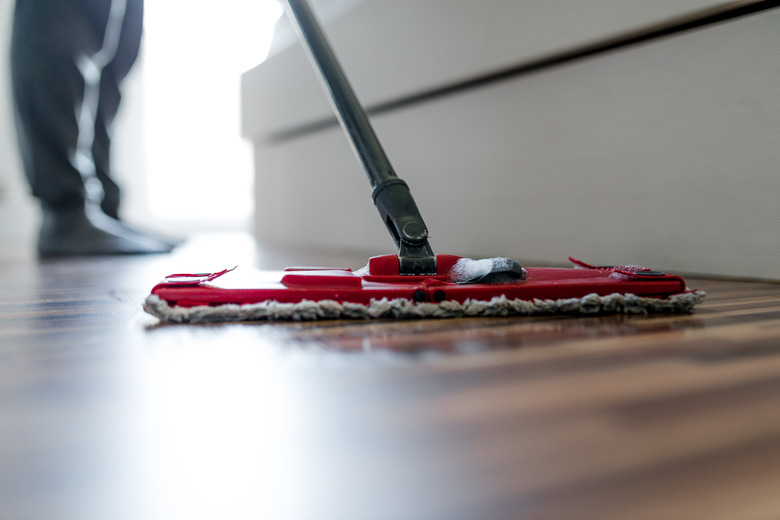How To Remove Urine Odor From Wood Subflooring
Pesky pet accidents are more than a minor inconvenience. The urine can stain carpet and soak down to the wood subflooring. Lingering odors and stains permeate the room and are impossible to hide. You may be able to remove dog or cat urine that has soaked into the wood, but some situations may require replacement of the subfloor.
Urine in a Plywood Subfloor
Urine in a Plywood Subfloor
When your pet has an accident, it soaks right into the carpet and filters down to the subfloor. The urine saturates the wood, where all of the odor-causing components remain. That includes uric acid, which contains crystals that cause the familiar pet urine odor you're trying to eliminate. If the floor gets wet or the room gets particularly humid, it can cause the smell to become stronger as the crystals get wet.
Removing those crystals from the wood can be very difficult. You may have some luck cleaning the urine in a plywood subfloor material, but the stained portion often needs to be replaced.
Pulling Back the Carpet
Pulling Back the Carpet
If the room is carpeted, pull it back to fully reveal the urine-soaked area. Make sure you find all of the areas so you can address the issue fully. If you're going to replace the carpet, remove it completely from the room to give yourself more space to work.
Using Enzymatic Cleaners
Using Enzymatic Cleaners
Enzymatic cleaners are sometimes effective in cleaning urine odors. The enzymes break down the odors caused by pet urine instead of just covering up the odor.
Saturate the subfloor with the enzymatic cleaner. Allow it to fully dry for at least 24 hours before you check to see if the odor is gone. Repeat the process if the cleaner doesn't work the first time.
Cleaning With Home Remedies
Cleaning With Home Remedies
Another option to try is a natural cleaning solution from household items. For fresh urine stains on the subfloor, hydrogen peroxide can help remove the odor. Pour it over the wood, and let it soak in for a few hours before blotting it with a towel.
A combination of liquid dish soap and baking soda can help absorb some of the urine. Spread the mixture over the affected area and leave it until it dries. Clean up the baking soda mix and inspect the area.
Plain white vinegar can also soak into the wood and help remove the urine odor. Dilute the vinegar with warm water and apply it to the urine stain. Let the vinegar mixture air dry. Check for any remaining odor in the floor after trying these methods.
Sealing the Floor
Sealing the Floor
You can coat the subfloor with dog and cat urine-resistant paint or sealer to help protect it from future damage. Look for products designed to block odors and stains. KILZ and Zinsser B-I-N are two common brands that work well.
Let the subfloor dry completely before using any type of paint or sealer on it. Once painted or sealed, leave the carpet pulled back to let it dry completely. Fans directed at the wet areas can help dry out the wood faster.
Removing the Subfloor
Removing the Subfloor
Wait before covering the subfloor with carpet to ensure the smell is gone. If you can't get rid of the smell completely, it's best to replace the subfloor. You don't have to tear up the entire subfloor. Just cut out the section that's soaked in urine, and replace it with new subflooring material.
